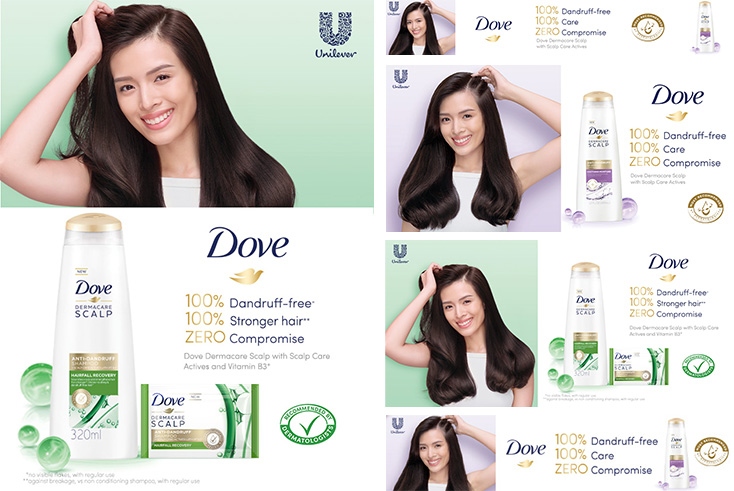Making display ads ‘sexy’ again

Opinion
Nothing says ‘meh’ like a static ad. Video is a clear win and it’s easier than ever to make these ads. We owe it to quality journalism to do more than still banners.
Sexy, tempting, alluring, enticing.
Not words we would use these days to describe online advertising, but the kind of language used freely in bygone times to describe the best and most iconic ads the industry had to offer. Intended to mean: appealing or interesting in a way that is likely to attract attention.
Our language may have changed since the 1990s and 2000s — and we’re better for it — but I’d still like display advertising to aspire to the kind of work those words once described: emotion-triggering ads that win awards and create sale tsunamis; ads we continue to watch for decades after they’ve run.
One of the best examples I can think of is the uber-appealing, unfailingly interesting advertising of Guinness’ imperial phase. Its legendary 1999 “Surfer”, soundtracked by Leftfield’s Phat Planet, remains one of the most emotive ads I’ve ever seen and millions agree. It was said to have helped the brand sell an extra Olympic swimming pool’s worth of Guinness every month.
Or Cadbury “Gorilla” from 2007, unforgettably based around Phil Collins’ In the Air Tonight. This ad is a masterclass of dual-coding in advertising — visual and audio stimulating differing parts of the brain to move us, to appeal to us. Chocolate advertising has never been “sexier” than that ad and the subsequent awards and sales proved that point.
These ads, and a select few more, are intriguing and mesmerising. They seduce the viewer while planting the brand firmly in the viewer’s memory; the connection they make is permanent.
Static ads: meh
These types of ads are normally on TV first, before cascading down the channels of advertising until they hit the last place a creative favours their work to appear: a static ad on a website somewhere.
The beauty of TV advertising is you have up to a minute to grab attention and create a connection with the viewer. With banner ads, you have fractions of a second to achieve the same. A lot needs to happen, very fast, to hold the viewer’s attention.
Display advertising is synonymous with static ads. Nothing says “meh” quite like a static ad. I challenge anyone to show me a static display ad that would count as “sexy” in old-fashioned advertising parlance. It just doesn’t work.
The key to memorable, appealing and interesting ads is to first achieve a level of awareness that there is an ad on the page in the first place, then ensuring as many synapses fire in the viewer’s brain as possible. To do this with a static banner involves either wizardry or bribery — or a combination of the two. Not a realistic prospect.
Bringing charm back
Where brands can add magnetism and charm back into the mix is with video.
Video is proven to capture the viewer’s attention. In three to six seconds, brands have a multitude of ways to grab the viewer by their emotions and bring them into the brand’s world — immersive, full-screen vertical video ads are hard to beat to achieve exactly this.
Arguments for video over static banner ads are incontrovertible, with video scoring higher on any metric you can name. In terms of click-through rate, on mobile video ads it can be 7.5 times higher than for static display ads (source: Instapage). Facebook video ads specifically generate 20-30% more clicks than image ads (source: ClearPivot).
Meanwhile, studies show that video ads can improve brand recall by up to 50% compared with static ones (source: Single Grain) and others find that adding a video ad to a product description can boost conversion rates by 35% (source: Whiteboard Animation). Video content is also more likely to be shared across social media platforms, with video ads generating 1,200% more shares than text and image content combined (source: Single Grain).
Attention among the clutter
Brands such as Unilever’s Dove and LatAm Airlines illustrate these effects, as well as increasing the sustainability of their campaigns through carbon-efficient means.
Boosting investment in compelling video offers a multitude of wins and the beauty of it is that the technology is now there to support brands that do. Up until around seven years ago, it was virtually impossible to run high-quality videos in any IAB ad format. You needed an outstream player and likely a vendor to stitch the media, technology, targeting and attribution together, to be deployed on certain media of the vendor’s choosing, at a not insubstantial cost.
Today, with solutions such as those offered by SeenThis, all brands are able to use their video and TV assets to create appealing and interesting ads that instantly catch the eyes of consumers and hold them there until the end.

This is the power of video. It grabs eyes and focuses them exactly where a brand needs them: on their ads, even within the noise and clutter of a busy website.
The US is by far the largest display ad market globally and here lies a huge blank canvas in which we can reimagine what we use display for and what value we can see and deliver.
Most brands advertise with static banners — it’s just the way it is. To ensure we maintain positive consumer experiences to support the mind-bendingly tough world of journalism, we should and could do more with it.
It’s possible to bring appeal and allure back into display activations. Together, let’s make advertising “sexy” again — even if we don’t call it that.
 Thomas Houge is chief commercial officer at SeenThis
Thomas Houge is chief commercial officer at SeenThis




